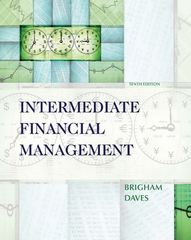Answered step by step
Verified Expert Solution
Question
1 Approved Answer
File Home Insert Page Layout Formulas Data Review View Help Search A1 x A B C D Chapter 7-Master it! In practice, the use
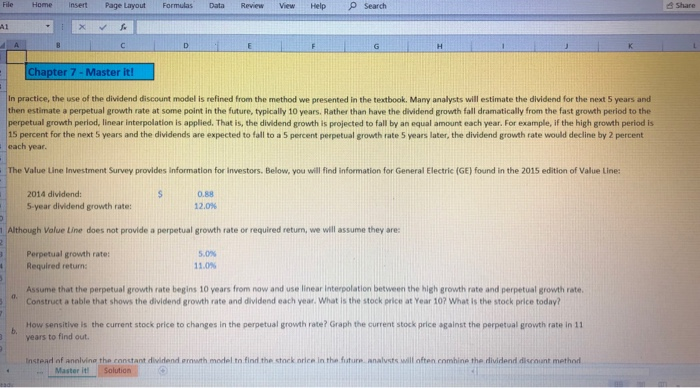
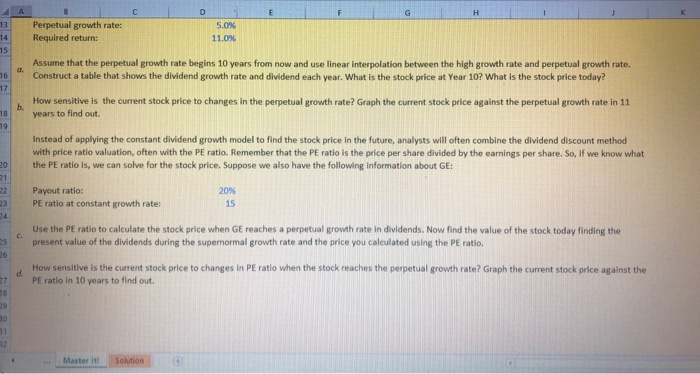
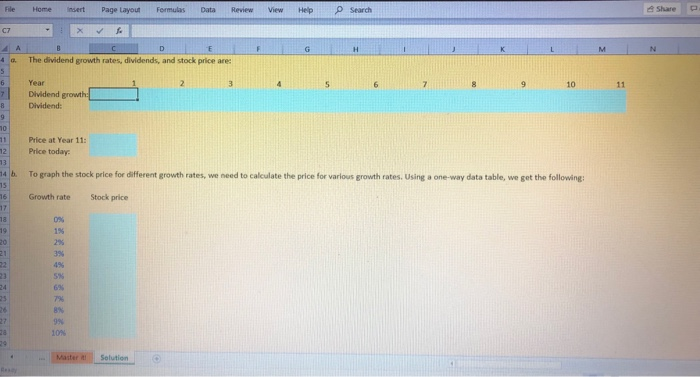
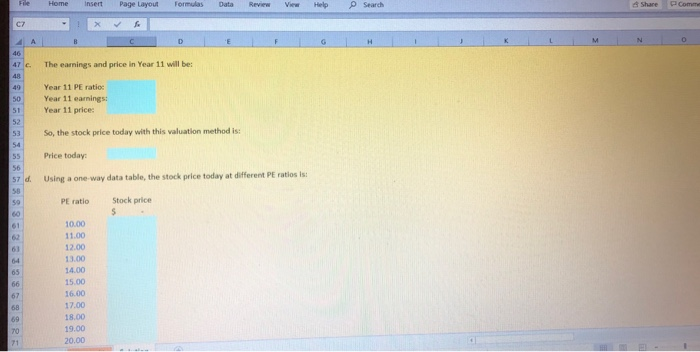
File Home Insert Page Layout Formulas Data Review View Help Search A1 x A B C D Chapter 7-Master it! In practice, the use of the dividend discount model is refined from the method we presented in the textbook. Many analysts will estimate the dividend for the next 5 years and then estimate a perpetual growth rate at some point in the future, typically 10 years. Rather than have the dividend growth fall dramatically from the fast growth period to the perpetual growth period, linear interpolation is applied. That is, the dividend growth is projected to fall by an equal amount each year. For example, if the high growth period is 15 percent for the next 5 years and the dividends are expected to fall to a 5 percent perpetual growth rate 5 years later, the dividend growth rate would decline by 2 percent each year. The Value Line Investment Survey provides information for investors. Below, you will find information for General Electric (GE) found in the 2015 edition of Value Line: 2014 dividend: $ 5-year dividend growth rate: 0.88 12.0% 1 Although Value Line does not provide a perpetual growth rate or required return, we will assume they are: Perpetual growth rate: Required return: 5.0% 11.0% a. b. Assume that the perpetual growth rate begins 10 years from now and use linear interpolation between the high growth rate and perpetual growth rate. Construct a table that shows the dividend growth rate and dividend each year. What is the stock price at Year 10? What is the stock price today? How sensitive is the current stock price to changes in the perpetual growth rate? Graph the current stock price against the perpetual growth rate in 111 years to find out. Instead of annlving the constant dividend erowth model to find the stock orice in the future analysts will often combine the dividend discount method. Master it! Solution Share 13 14 15 16 17 18 19 A a. b. B Perpetual growth rate: Required return: C D 5.0% 11.0% Assume that the perpetual growth rate begins 10 years from now and use linear interpolation between the high growth rate and perpetual growth rate. Construct a table that shows the dividend growth rate and dividend each year. What is the stock price at Year 10? What is the stock price today? How sensitive is the current stock price to changes in the perpetual growth rate? Graph the current stock price against the perpetual growth rate in 11 years to find out. Instead of applying the constant dividend growth model to find the stock price in the future, analysts will often combine the dividend discount method with price ratio valuation, often with the PE ratio. Remember that the PE ratio is the price per share divided by the earnings per share. So, if we know what the PE ratio is, we can solve for the stock price. Suppose we also have the following information about GE: 20% 15 Use the PE ratio to calculate the stock price when GE reaches a perpetual growth rate in dividends. Now find the value of the stock today finding the present value of the dividends during the supernormal growth rate and the price you calculated using the PE ratio. 20 21 22 Payout ratio: 23 PE ratio at constant growth rate: 24 C. 25 26 d. 27 28 29 30 How sensitive is the current stock price to changes in PE ratio when the stock reaches the perpetual growth rate? Graph the current stock price against the PE ratio in 10 years to find out. 31 32 Master it! Solution File Home Insert Page Layout Formulas Data Review View Help Search C7 x $. C AA B 4 G The dividend growth rates, dividends, and stock price are: D F G H K 2 3 5 M 10 11 To graph the stock price for different growth rates, we need to calculate the price for various growth rates. Using a one-way data table, we get the following: 5 6 Year 7 Dividend growth 8 Dividend: 9 10 11 Price at Year 11: 12 Price today: 13 14 b. 15 16 Growth rate Stock price 17 78 0% 19 1% 20 2% 21 3% 4% 5% 24 6% 25 7% 26 8% 27 9% 28 10% 29 Master it Solution Ready Share File Home Insert Page Layout Formulas Data Review View Help Search Share C7 x Sx A B D G H 46 47 c. The earnings and price in Year 11 will be: 48 49 Year 11 PE ratio: 50 Year 11 earnings: 51 Year 11 price: 52 53 So, the stock price today with this valuation method is: 54 55 56 57 d. Price today: Using a one-way data table, the stock price today at different PE ratios is: PE ratio Stock price 58 59 60 $ 61 10.00 62 11.00 63 12.00 64 13.00 65 14.00 15.00 66 67 16.00 68 17.00 69 18.00 70 19.00 71 20.00 Comme
Step by Step Solution
There are 3 Steps involved in it
Step: 1
To solve this problem we will apply the Dividend Discount Model DDM with a twostage growth model This involves two phases of dividend growth a highgro...
Get Instant Access to Expert-Tailored Solutions
See step-by-step solutions with expert insights and AI powered tools for academic success
Step: 2

Step: 3

Ace Your Homework with AI
Get the answers you need in no time with our AI-driven, step-by-step assistance
Get Started


